So you may be thinking of getting more than one water tank. How do you make them more effective? One way is to link them together. Linking multiple water tanks offers greater flexibility in increasing your rainwater harvesting capacity. In fact, an often easier and cheaper way to increase your water storage tank’s capacity is to add another tank rather than replace an existing tank with a larger one.
In this article, we will show 2 ways in which multiple water tanks can be set up together:
Linking multiple water tanks together from the top
This method fills the tanks in the system one at a time in such a way that water flows from the overflow of one tank and into the inlet (top part) of the next. Additional piping is necessary to connect overflows to inlets. It’s also important for both parts to match in size to avoid obstruction or leaks in the flow of water.
The principle of linking tanks together from the top works on gravity, which means that the overflow of the first tank in the chain has to be slightly higher than the inlet of the second tank, and so on, in a stair step pattern.
Guidelines for connecting water tanks from the top:
- If all tanks are the same height (basing on the overflows), they have to be placed on an incline and/or on different height foundations to create the stair step formation that facilitates gravity.
- If the water tanks involved in the system are different heights (which means that their overflows and inlets naturally form a stair step pattern), then they can be placed on the same level of foundation.
- Water can be drawn from any tank in this series but the water level between tanks won’t necessarily level out.
- If only one downpipe is feeding the system: Close any additional overflows in the system so that the water will flow from tank to tank and not out of an overflow. The only overflow allowed in this system to remain open and function as normal in the expulsion of excess rain or stormwater is the overflow of the last tank in the chain.
- If there are 2 or more downpipes feeding the system: If you have more than one downpipe feeding your system, then you will need more than one overflow open to ensure the correct balance between water input and output. A qualified plumber will be able to help you get the right ratio.
Dry rainwater harvesting system
Linking water tanks together at the top can utilise a dry system, which is when all the pipework that feeds your storage tank/s sits higher than your tank/s. Dry systems usually don't involve the use of any taps between tanks (they are free flow) which is why this is a good plumbing method for linking water tanks from the top. |
>
Linking multiple water tanks together from the bottom
This method causes all tanks in the system to fill simultaneously and evenly. It connects storage tanks at the bottom — outlet to outlet — as opposed to an overflow to inlet connection.
It’s a good rule of thumb in this method of connecting water tanks to align all overflows, regardless of the dissimilarities in the tanks’ height.
Guidelines for connecting water tanks from the bottom:
- Parallel tank system: If the tanks are the same size/height, the alignment of the overflows will be easy. Once aligned, the rest of the overflows can be capped except for one. Only one overflow is necessary assuming that there is only one downpipe equal to the size of the overflow.
- Tank elevation adjustment: If the tanks are a different size/height, mount the smaller ones on a raised base so their overflows align with the overflow of the tallest tank. This means that water surfaces between tanks will align with each other when full.
What happens when overflows aren’t aligned?
Smaller tanks placed on the same level of foundation as taller water tank/s will give you a picture of water tanks whose overflows don’t line up. When this is the case, either of the following two things can happen:
-
Due to stronger pressure from smaller tanks: Smaller tanks that are weaker may burst at the seams or water may leak out of smaller and weaker tanks.
-
Depending on which overflow is capped, the water may only fill up to the height of the lowest tank.
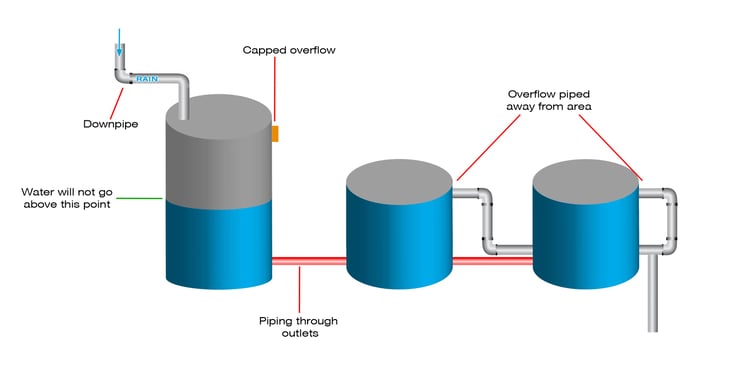
PRO TIPS (how to prevent loss of stored water when connecting tanks from the bottom):
You can continue adding another tank to your system as your space allows without losing a drop of water by doing the following:
- When adding a new water tank into the system, make sure the valve on existing water tanks are shut to avoid water leaking out while you are installing additional piping.
- If one of the tanks in the system springs a leak, immediately close the valve of the other tanks to preserve water in those tanks.
Water tanks are connected at the bottom with rigid or flexible piping.
We’ve discussed the difference between rigid and flexible pipes in this related topic below:
How to Extend the Life of Poly Tanks With One Simple Item
Wet rainwater harvesting system
Linking water tanks together at their base can utilise a wet system, which is when rainwater from the roof passes through pipework that runs horizontally, usually underground or on-ground, before it enters the water tanks. |
If you’ve never linked water tanks before, you may think it’s a little too complicated. But don’t worry, professional installation by a licensed plumber is often required in Australia, so it’s to your advantage to employ the knowledge and expertise of one.
Now that you have an idea how multi-tank systems are set up, what else would like to know?
Contact us or read more about these related topics below:
Multiple Water Tanks vs. A Single Water Tank: Which Is Best?
Rainwater Harvesting: A Complete List of Benefits
Every Must-Have Component for Rainwater Harvesting You Should Be Familiar With (Checklist for Beginners)
Disclaimer: Please note that the points made in this article are general in nature. Since particular situations can be unique, talk to a licensed plumber to ensure the success in the installation of your multiple water tanks.
Editor's Note: This post was originally published on August 23, 2018 and has been revamped and updated for the purpose of accuracy and comprehensiveness.



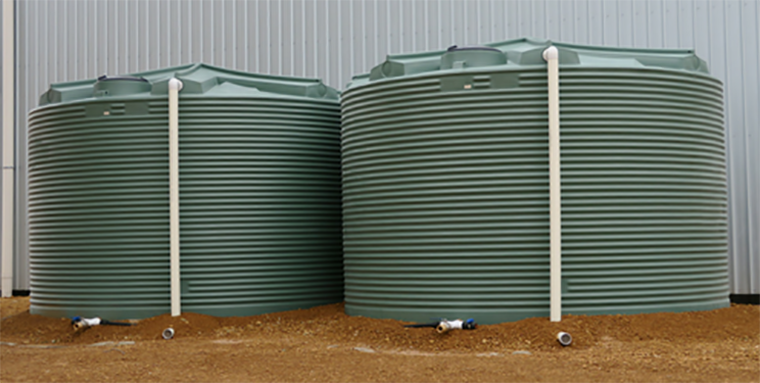

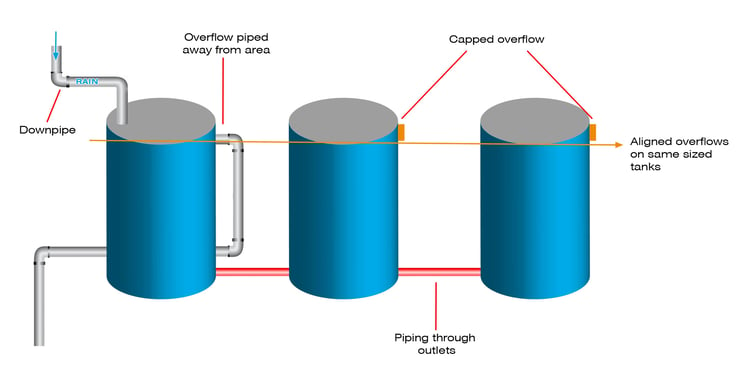
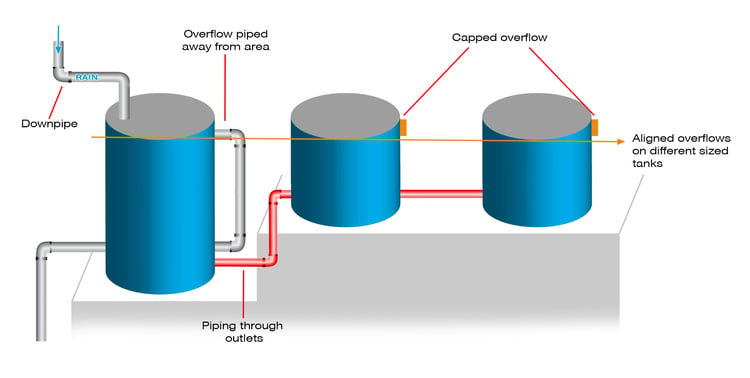
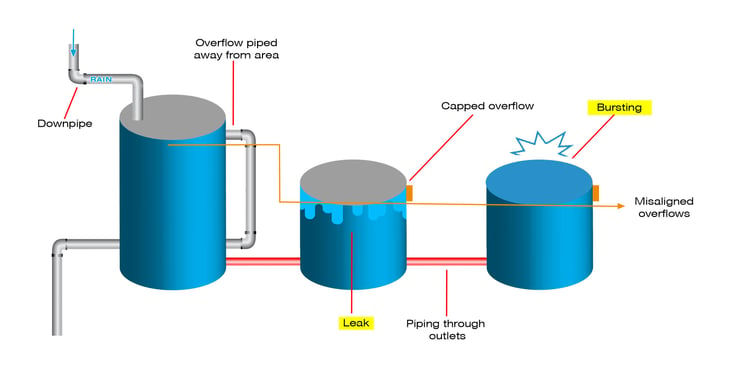


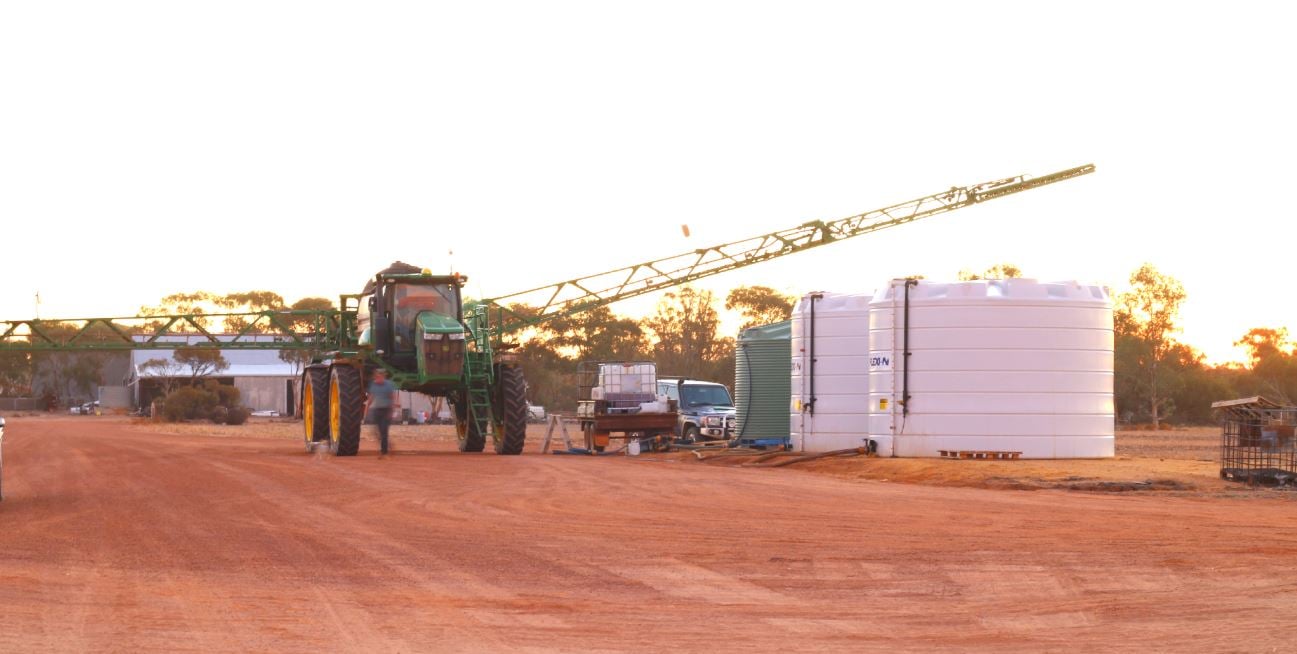

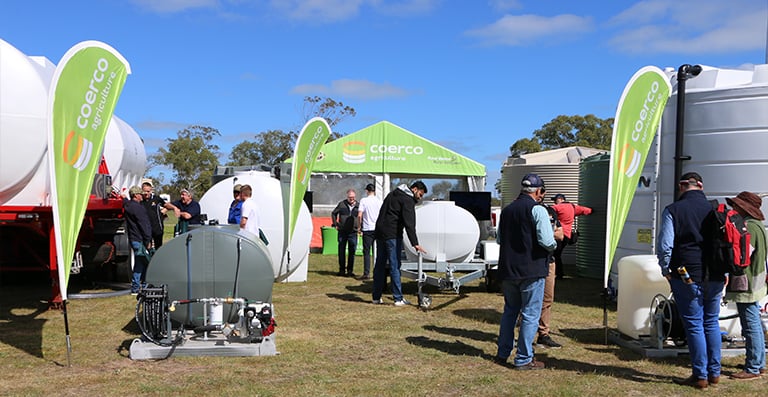
What do you think about this post?
Comments